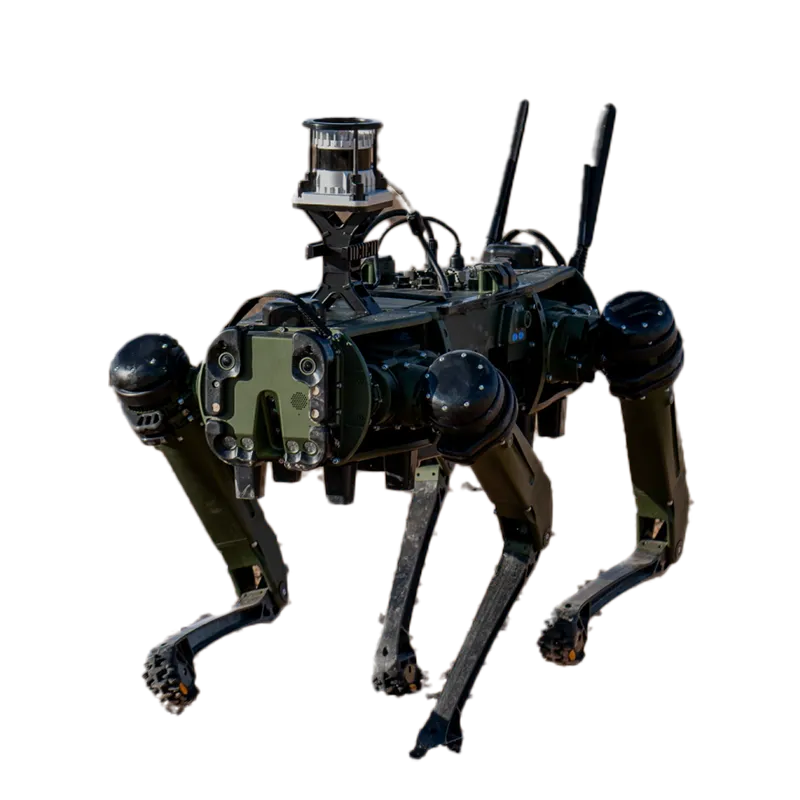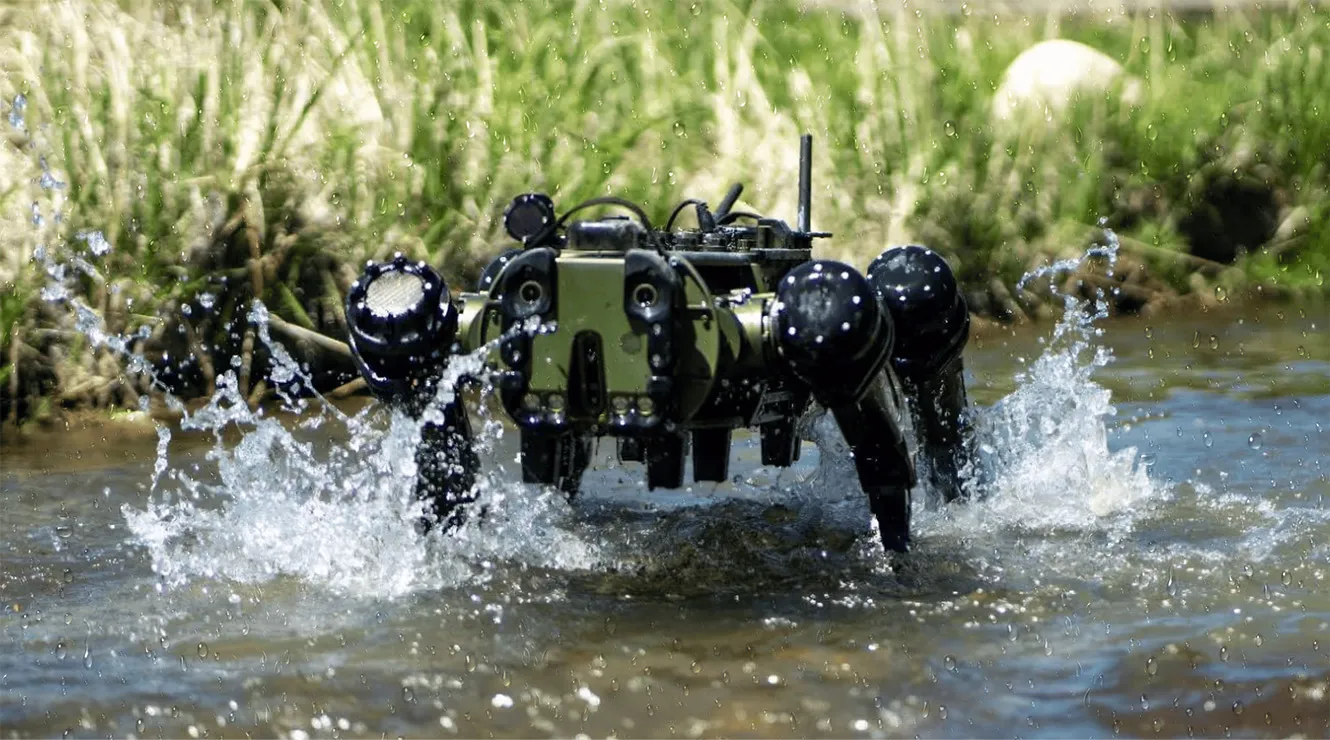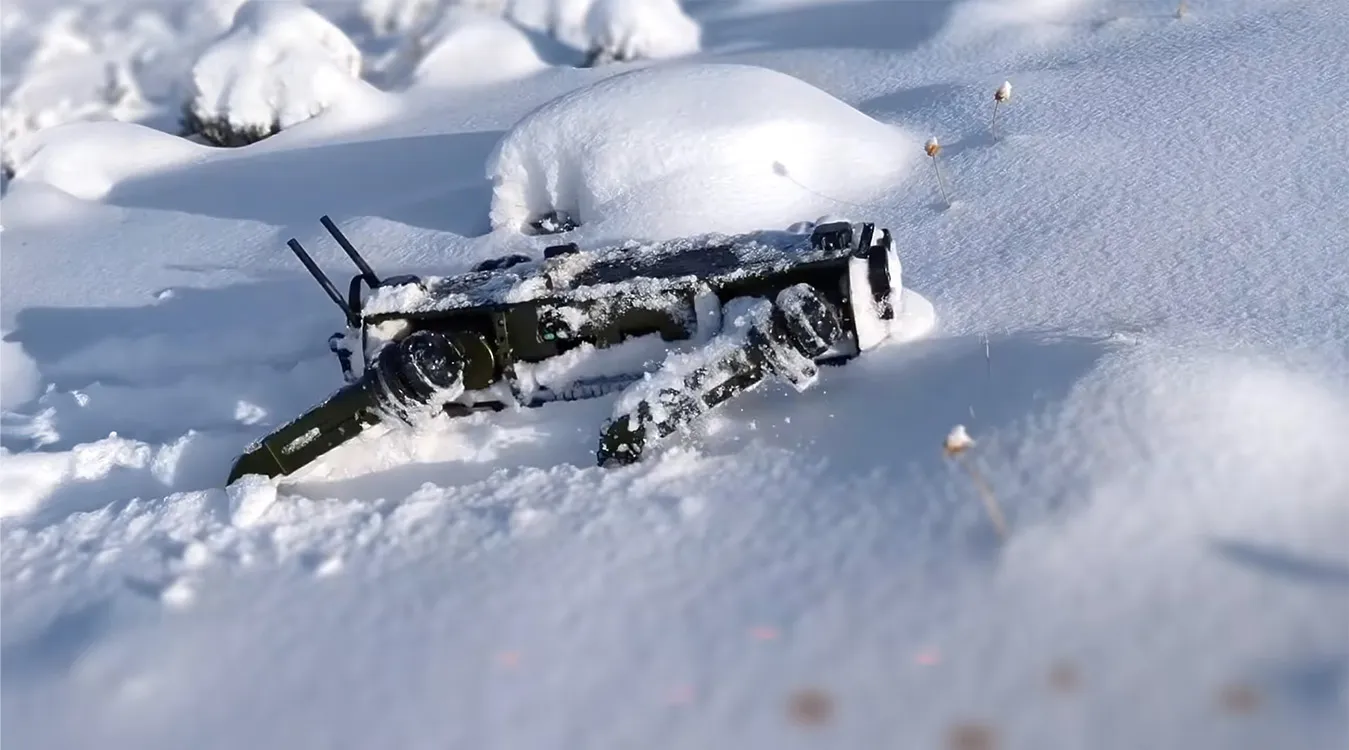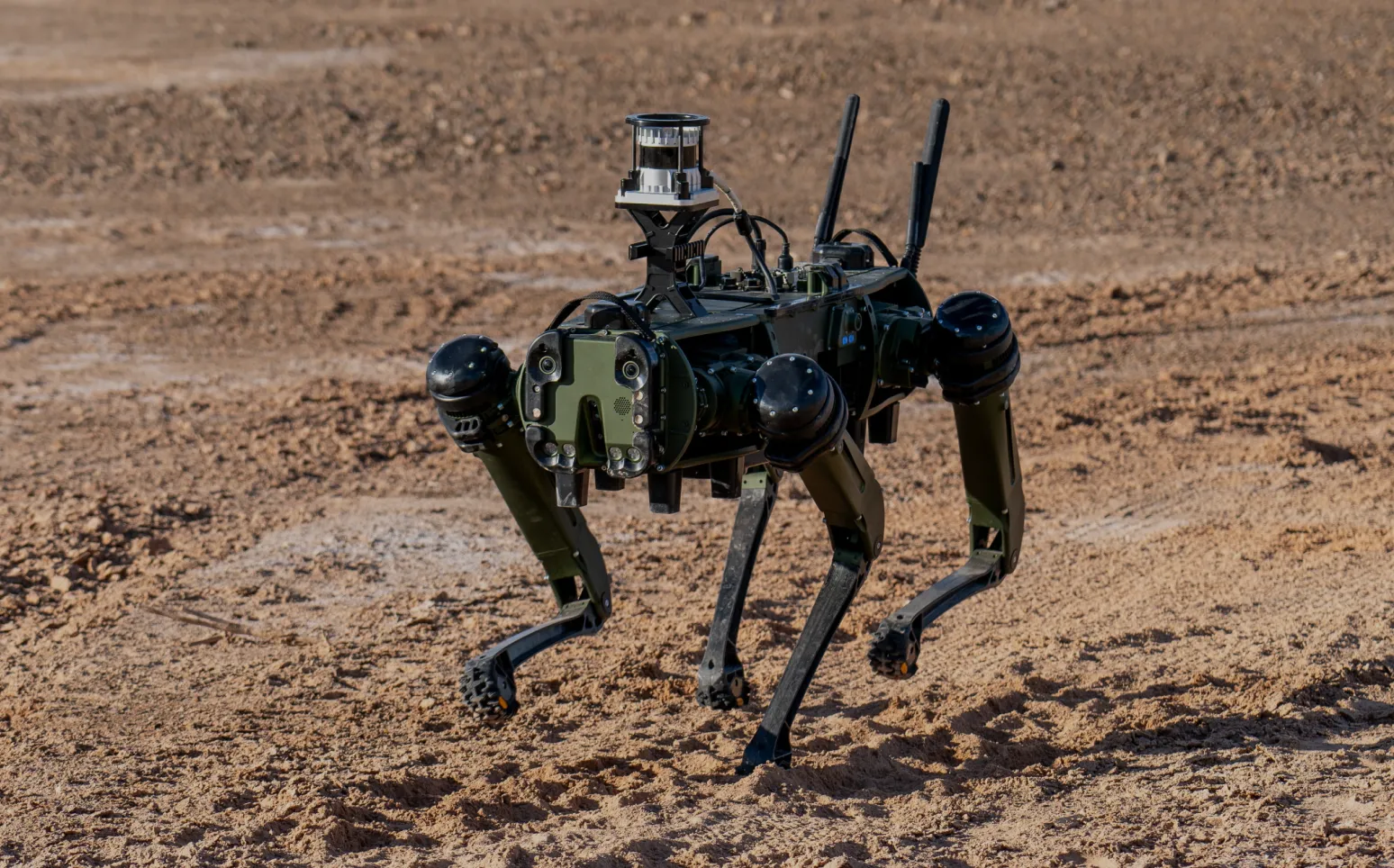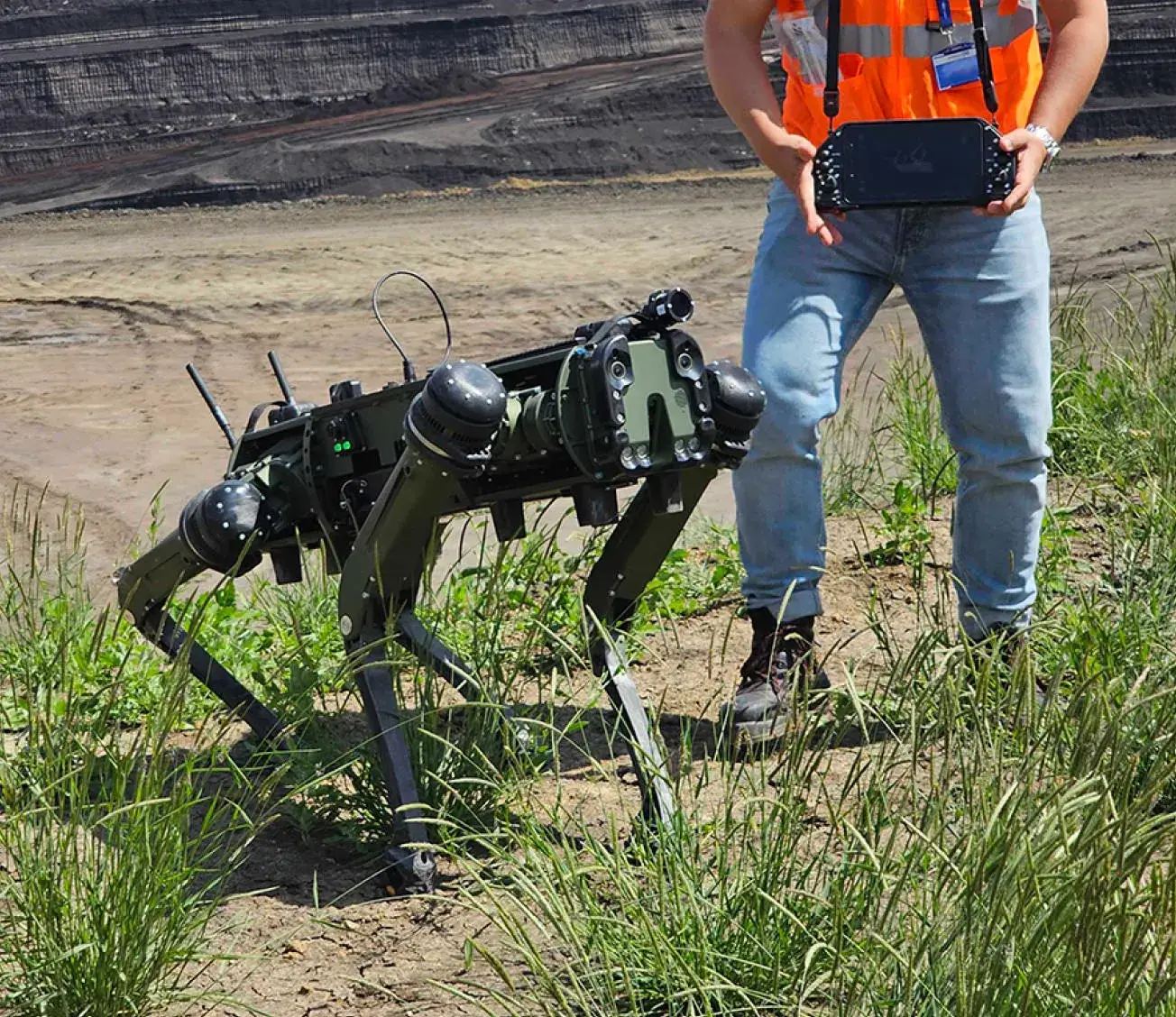Intro
The Vision 60 is a 51 kg, modular quadruped with 12 electric motors providing 3 degrees of freedom per leg, including 360° articulating two-link legs with replaceable toes. Its chassis supports swapping key subsystems like legs, batteries, CPUs, and sensor heads quickly in the field. Designed for extreme environments, it incorporates high-end computing hardware (NVIDIA Xavier), multiple RGB and TOF cameras, and wireless communications including 2.4 GHz radio and Wi-Fi mesh networks. The robot excels at climbing stairs, traversing steep inclines, wading through swamps, and navigating debris fields. Should it fall or tip, it autonomously recovers, including operating inverted if necessary. Its control system incorporates “blind-mode” to maintain locomotion despite sensor degradation.



